|
On Wednesday July 9th, the Lincoln
campus of Heartland Community College held a junior nurse academy.
This free 3-hour course was held from 1:00 p.m. until 4:00. Kids in
6th, 7th, or 8th grade were encouraged to attend, but their parents
did have to register them due to limited availability.
The instructor was Dameron Beverly,
who is a nurse herself. Her accolades and titles include a Master of
Science in Nursing, a Registered Nurse, and Certified Academic
Novice Nurse Educator (MSN, RN, and CNEn).
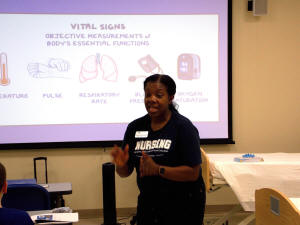
Beverly started off her class by
asking the students a few basic questions about nursing and their
knowledge. She also told the students about the skills they were
going to be learning about and practicing.
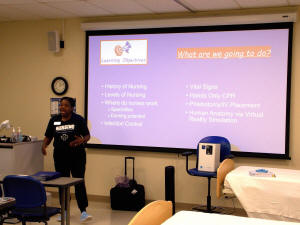
The class started out, as Beverly
informed the students, with a lot of discussion and a couple of
videos. Beverly informed the students that understanding the basics
about health was important before they got up and practiced the
skills. Beverly presented a slideshow on nursing and what levels of
nursing the students can achieve, from a nursing assistant all the
way to a doctor of nursing. The students also learned the different
places that nurses can work, from hospitals to the military.

After this introduction, Beverly
had the students use stethoscopes on themselves and watch a video on
lung sounds and what lungs with different health problems sound
like. She also had the students use a pulse oximeter, or pulse ox,
on themselves, measuring things like their pulse rate and
blood-oxygen level. After this, Beverly showed the students how to
use an at-home blood pressure cuff.

[to top of second column] |
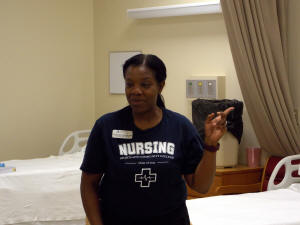

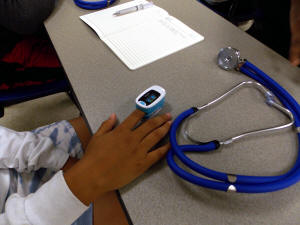
While teaching the students these
practical skills, Beverly also supplemented the activities with
valuable knowledge. When the students were using the stethoscope,
she talked about where the lungs are in the chest and the different
places doctors use stethoscopes on people. When the students used
the pulse ox, Beverly taught the students about what level a
personís oxygen saturation should be, as well as the reason
ambulances and hospitals have oxygen to administer to patients whose
levels are low. When showing the students how to use the blood
pressure cuff, she talked about what a good blood pressure level is,
as well as the dangers of having your blood pressure at a level that
is too high or too low.
For all of the great information Beverly shared with the students,
they had an equal number of questions to follow. Beverly was very
responsive to their questions, answering them honestly, and praising
students for their skills at paying attention and asking good
questions.
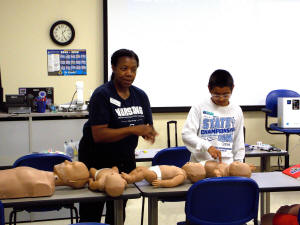
Some of the other skills Beverly
taught the students included CPR for adults and babies, what an AED
is and how to use it, the Heimlich maneuver and what to do when
someone is choking, and how to properly insert an IV. Overall,
Beverly did an excellent job of instructing the young people
present, and they seemed to genuinely enjoy interacting with and
learning about what she had to teach.
[Matt Boutcher] |